|
|
A fairly modern view of Skinningrove Iron and Steel Works from the Hummersea Cliff road. No. 5 Blast Furnace in evidence – and under that water tower on the cliff edge was the Day Laboratory. Rodney Begg told the Archive: “Here I spent my formative years, learning my trade under the watchful eyes (and ears) of ”Effie” Brown, Harry Burnley, Harry Grange and Norman Dale.“
Image courtesy of Eric Johnson, thanks to Rodney Begg for the update.
Underground at North Skelton, the Archive was not going to hazard a guess at to what is going on in this photograph, and awaited for someone out there to tell. Chris Twigg came to the rescue with : “I believe its a Walker compressed air drill.” Presumably this would be prior to inserting explosives into the holes for blasting? Danny Plews adds: “The drill bit was at least 4 to 5 feet long and had its dangers with possible finding gas or in the case when I was down there, WATER from another old mine tunnel. When this happened the driller got a soaking – it didn’t happen to me but saw it happen which meant that we had to attempt to plug the hole – not an easy task. When this happened we started another tunnel to try and get all the ore that we could possibly extract!”
Image courtesy of the Pem Holliday Collection and others; thanks to Chris Twigg and Danny Plews for the updates.
Here’s a good image of a Cranner Loader in action at North Skelton Mine. Quite a late image, judging by the headgear and electric lamps. North Skelton Mine was the last of the Cleveland Mines to close, so this image could be as late as 1963.
Image courtesy of the Pem Holliday Collection, etc.
A newspaper cutting from about 1930-1940, showing the underground stables at ”Duckhole” pit (so named because it was one of the wettest pits in the Cleveland System). This pit was eventually worked from Lumpsey mine at Brotton. Simon Chapman advised the Archive: “The horse keeper was Bob Robinson, who has specially put on his helmet for the picture. That round object at the bottom right of the picture is his cap!
Although the cutting refers to it as Carlin How pit and the other mine in the valley was known as Loftus mine, both were actually in Skinningrove Valley! Loftus mine was more popularly known as Skinningrove and is now the basis of the Cleveland Ironstone Mining Museum. The horse stables for Loftus mine were believed to be situated under Loftus town Hall, we will check this out.
Image courtesy of various sources, including Cleveland ironstone Mining Museum, the Pem Holliday Collection, etc., thanks to Simon Chapman for the update.
To the bottom left are the stables, then comes Overman’s Cottages (hoss muck terrace, as it was known by the locals) then what looks like a bridge is where the stone from Loftus mine was taken to Duck Hole and up the shaft to the works at the top of the bank. This happened when the railway put up the charge for the mine using the zig zag line. Kilton viaduct can just be seen and Mill Bank snakes it’s way to the top of the photo. We must not forget the children posing in the front of the photo, it was wonderful how the word got round when the photographer was coming.
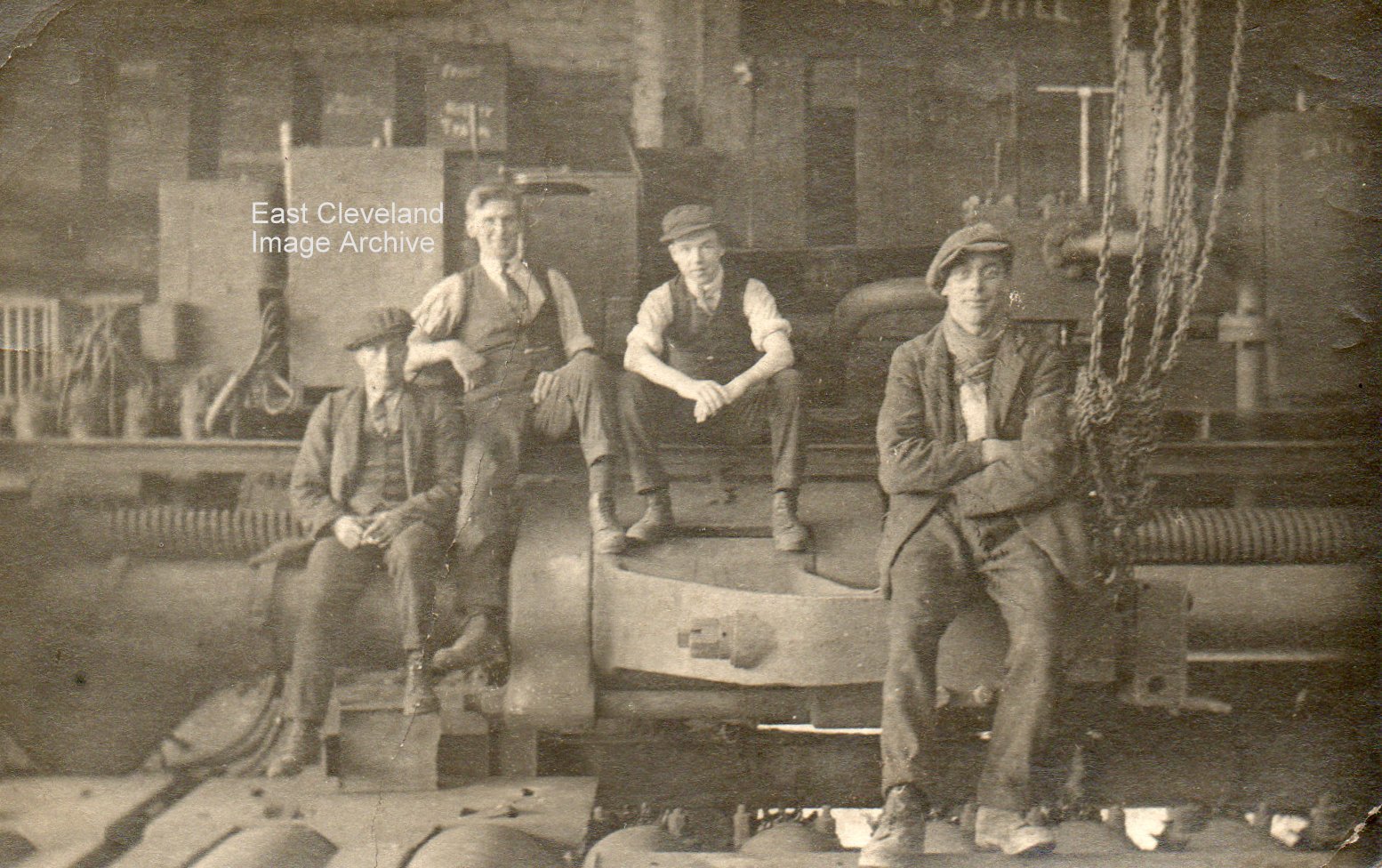
Well that was the caption on the back of the photograph together with ’pre war’ and the names of those in the picture: Lenny Calvert, Ernie Johnson, Charlie Vodden and Tot Porrit. George Brown tells us: ”The large metal block on which the men are; sat moved along the screw thread you can see behind them – IN or OUT – and set the length of billet of steel to be cut by the shears which are out of the picture to the right hand side . I have not seen the complete set up till now as it was not used in my time at the steelworks and parts had been removed. If it had just been in use it would have been too hot to sit on! So must be up for repair or when first put in. Hope this helps?”
Image courtesy of Kathleen Hicks and thanks to George Brown for the update.
Loftus Mine at full production in about 1900. More popularly known as Skinningrove mine, in the picture it is possible to see at the right hand side is what was known as the wood yard where the wood for the pit props was stored. Mill Bank is just visible at the far right and in the foreground are the stables. These are the surface stables, access inbye to the mine was via the Horse Drift. The underground stables were situated underneath Loftus Town Hall, there were stalls for 16 horses; with provisions for fodder and water, etc. Harold Found, an ex-miner tells us: ”The stables were kept immaculate.” As a new miner he spent time at the blacksmiths next door, assisting the blacksmith with shoeing horses, etc.
Image courtesy of the Pem Holliday Collection and others, thanks to Harold Found for this update.
We wondered where the train was and Mark tells us: ” That’s a War Department locomotive on a train from Skinningrove at Huntcliff, roughly where the ring shaped sculpture is, making a racket no doubt, it looks windy but the exhaust is been blasted skywards.” Eric Lindsay asked: “Was the line Saltburn to Whitby all dual tech or only part ? Sandsend viaduct appears to be single track.” Terry Robinson answered the query: “The track was dual as far as Crag Hall, then was single line with passing loops at stations along the route, all the viaducts and tunnels were single line.”
Image courtesy of Ted Morgan, via Eric Johnson; thanks to Mark for the update; also to Eric Lindsay and Terry Robinson for the update on dual tracking.
Saltburn viaduct and a steam train with a rake wagons filled with ironstone passing over. The viaduct today carries trains from Boulby Potash mine and service as necessary the works at Skinningrove.
Image courtesy of Eric Johnson.
When first posted, the Archive was aware it was a culvert being dug out; however David Richardson came to the rescue with: “Yes it is Twizziegill Culvert during its construction.” As the Teesside to Whitby via the coast line opened in December 1883, creation of the culvert must have been prior to this date. Visible are a lot of workmen, but not doing any work; obviously the photographer was expected.
Image courtesy of Cleveland Ironstone Mining Museum and thanks to David Richardson for the confirmation.
|
|
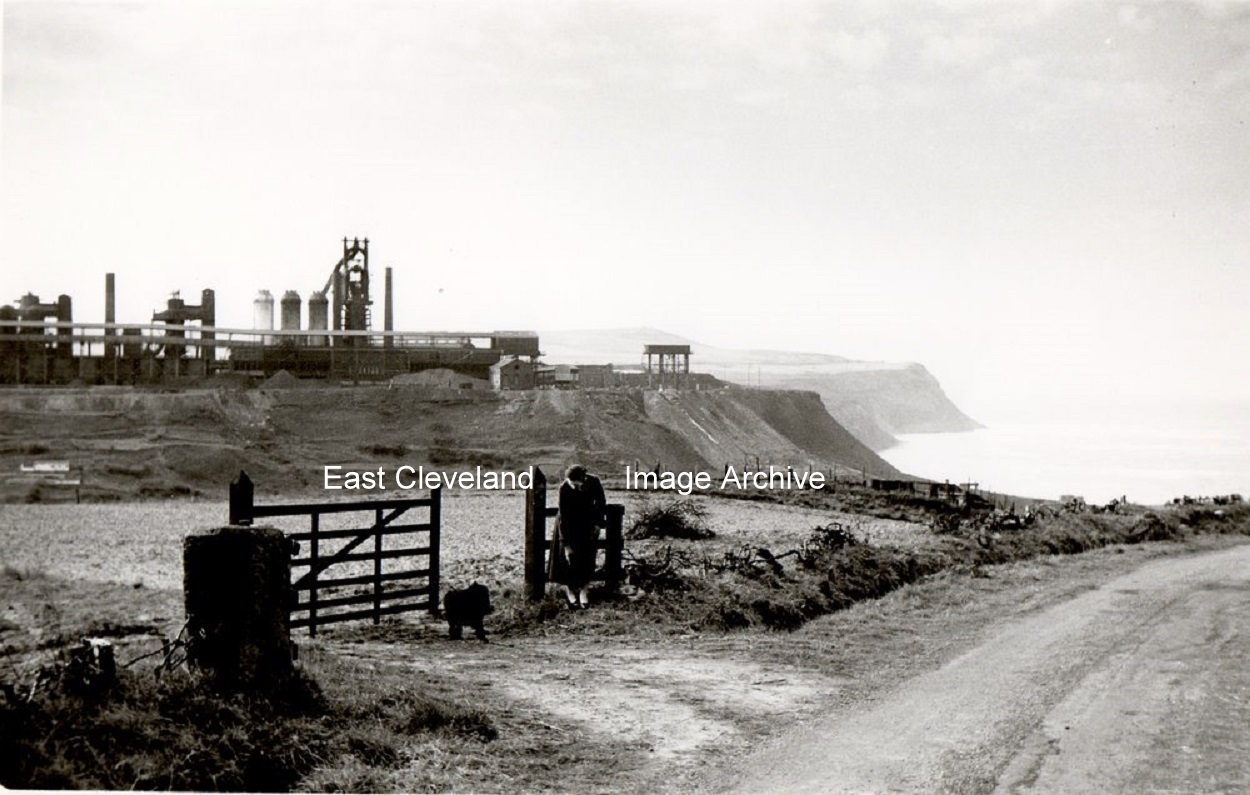
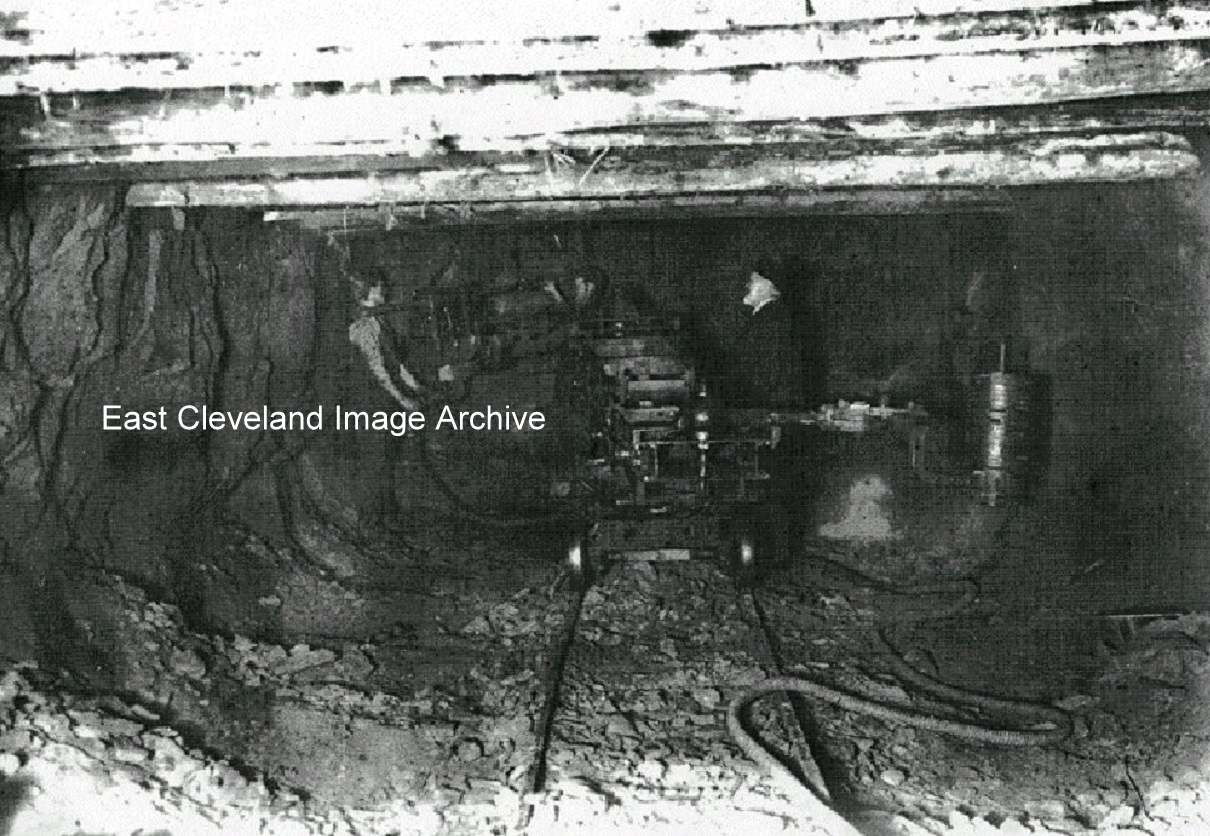
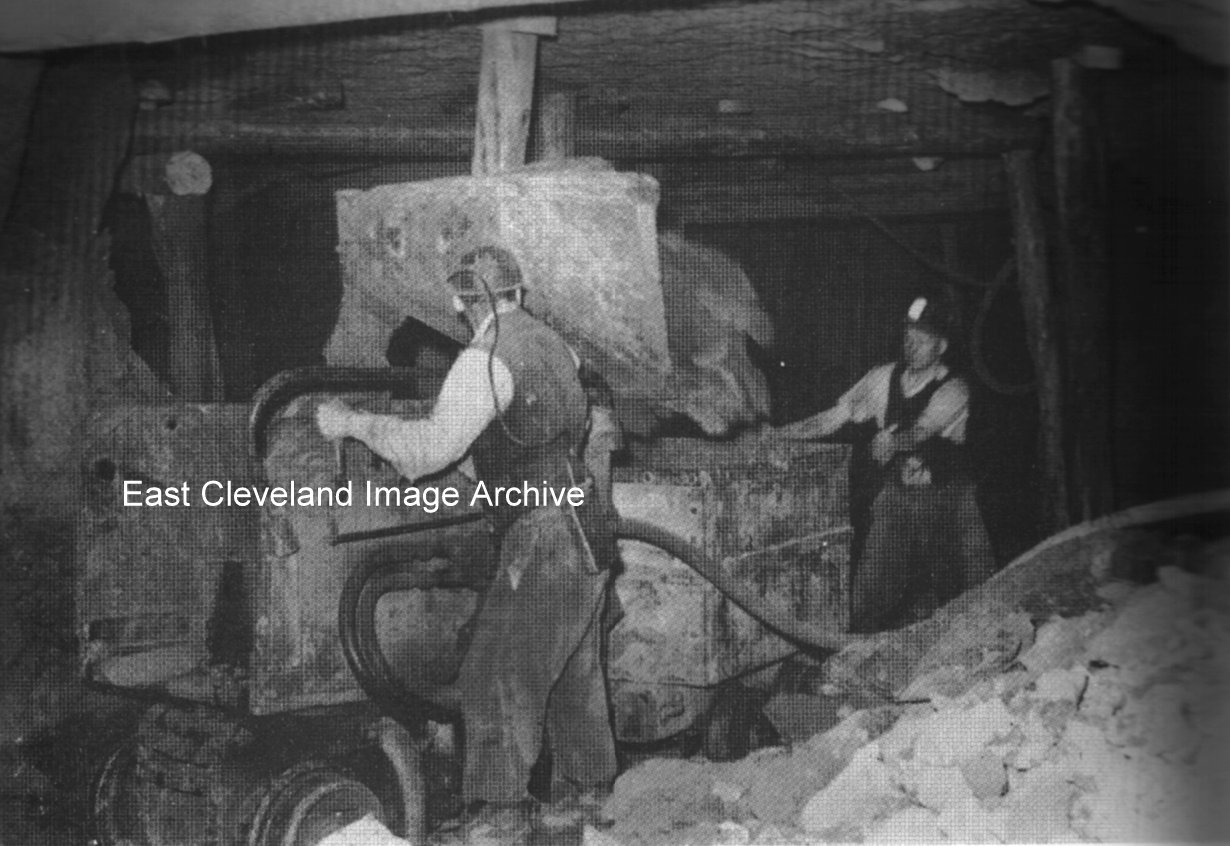
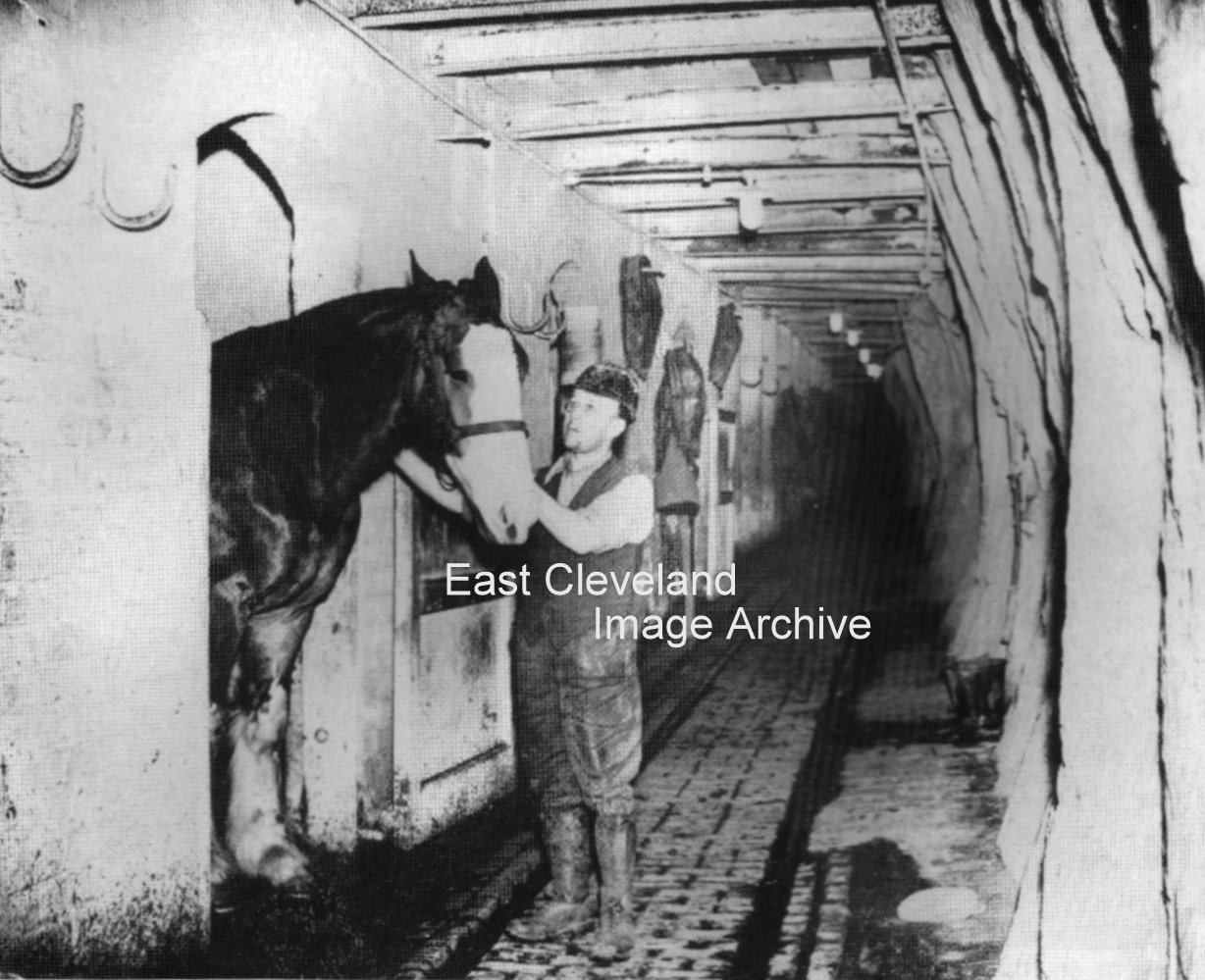
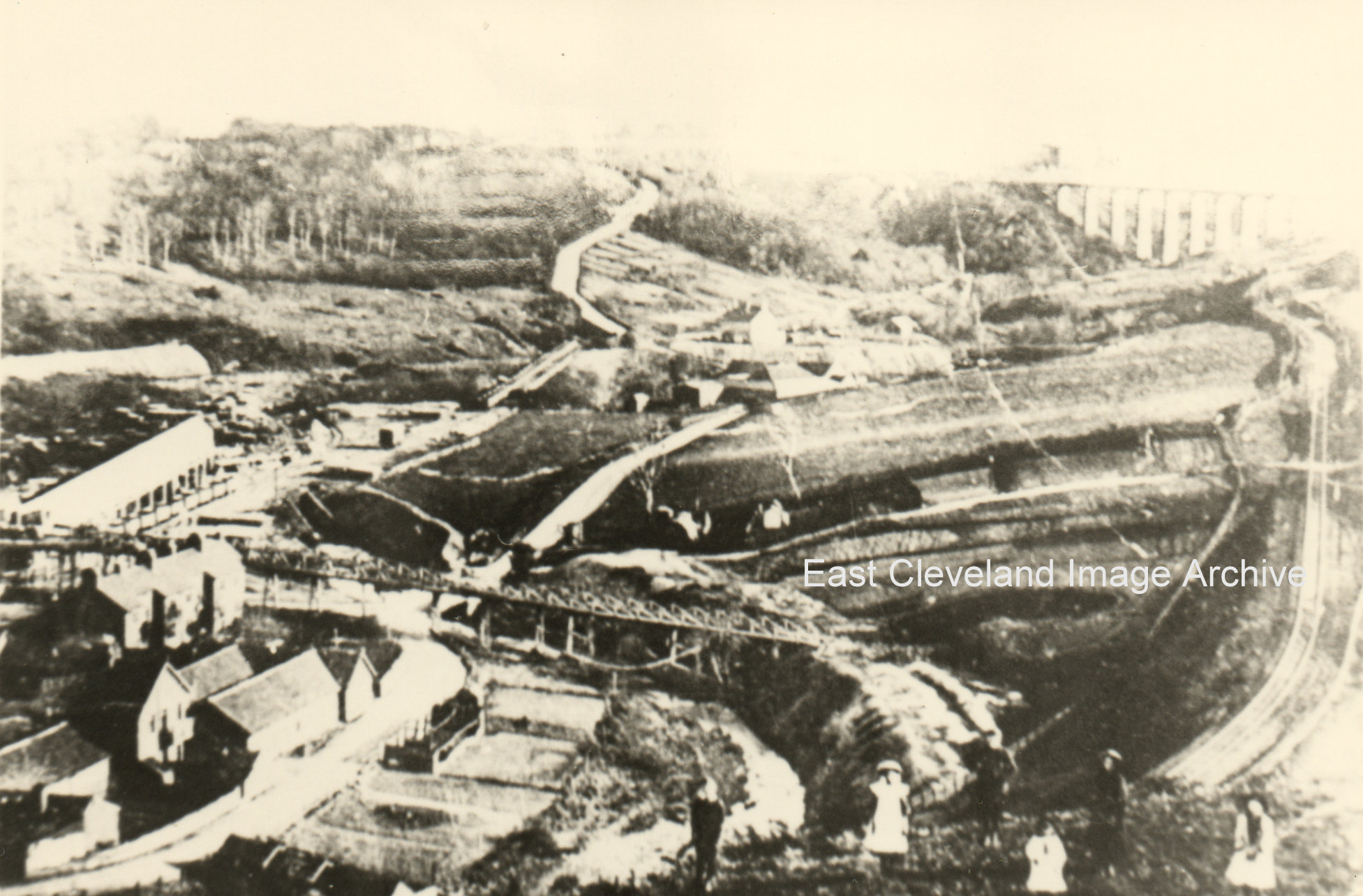

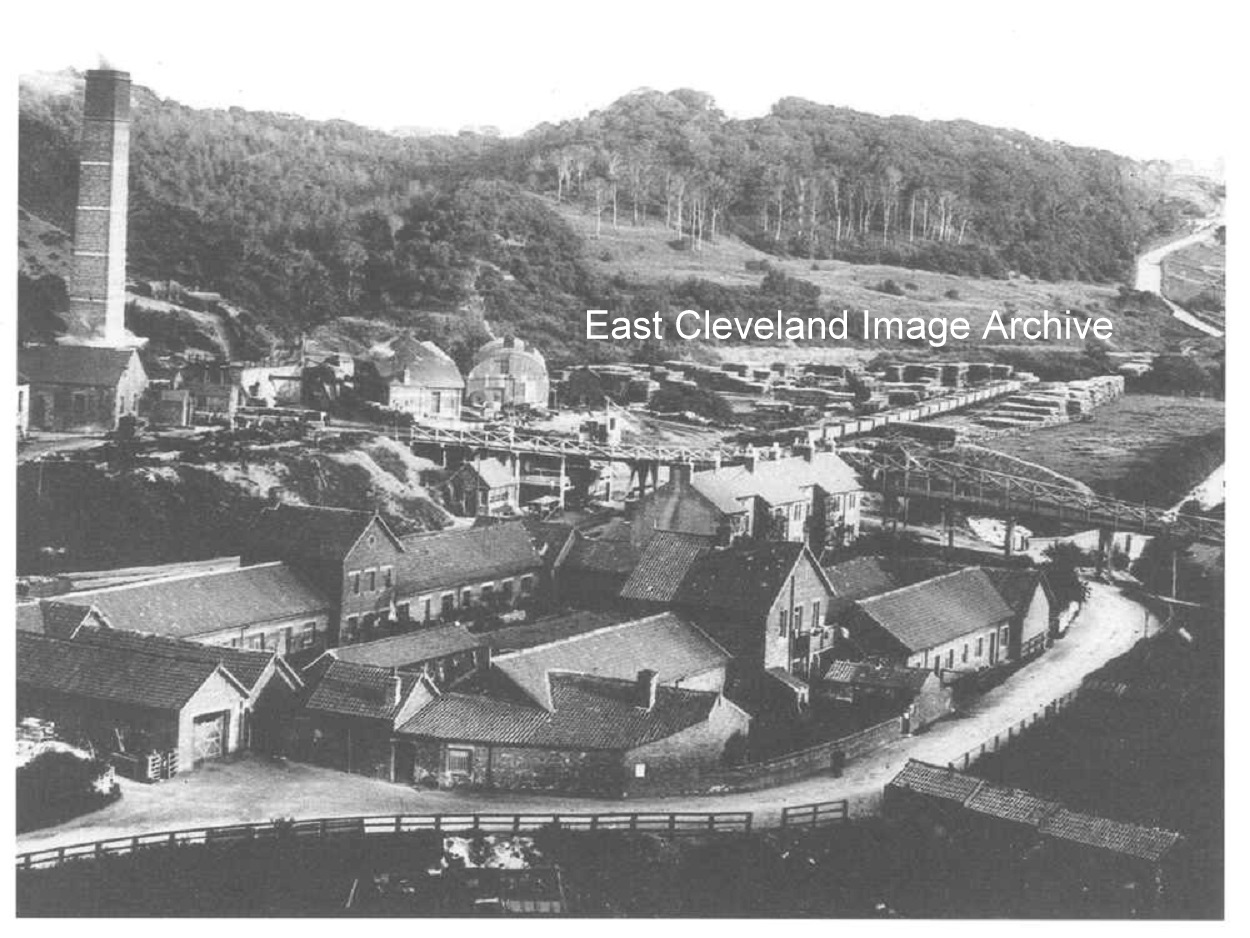
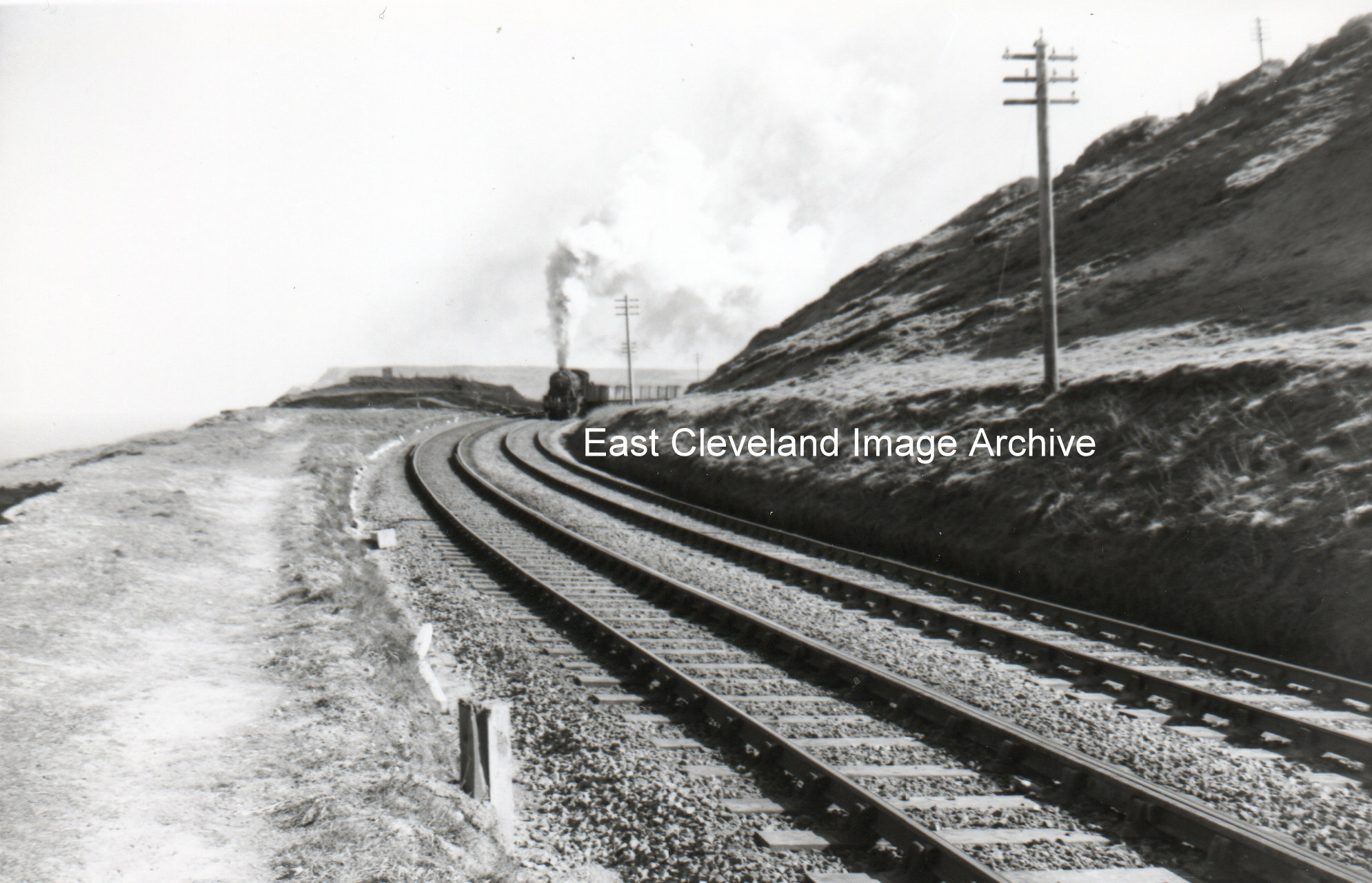
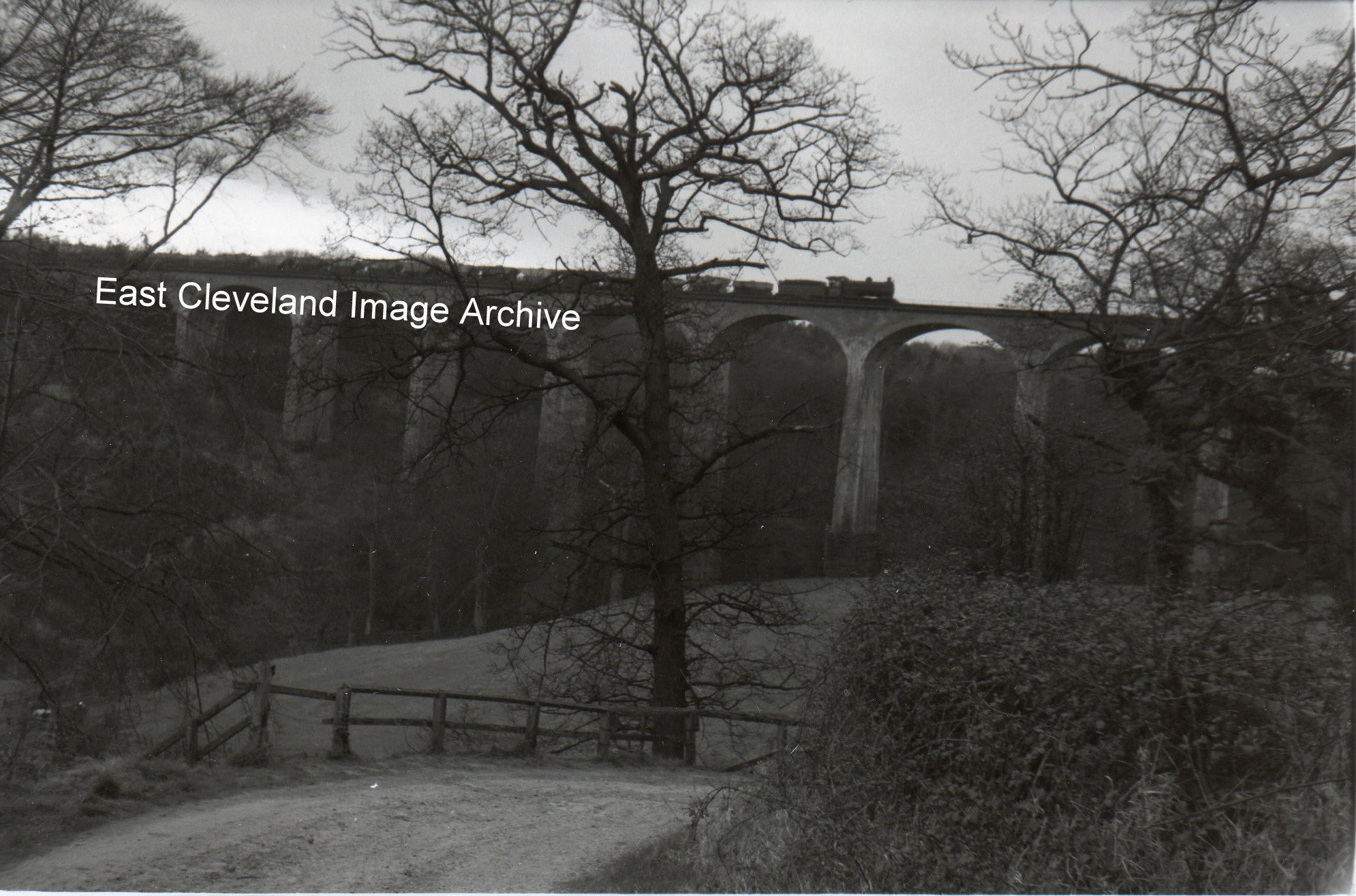
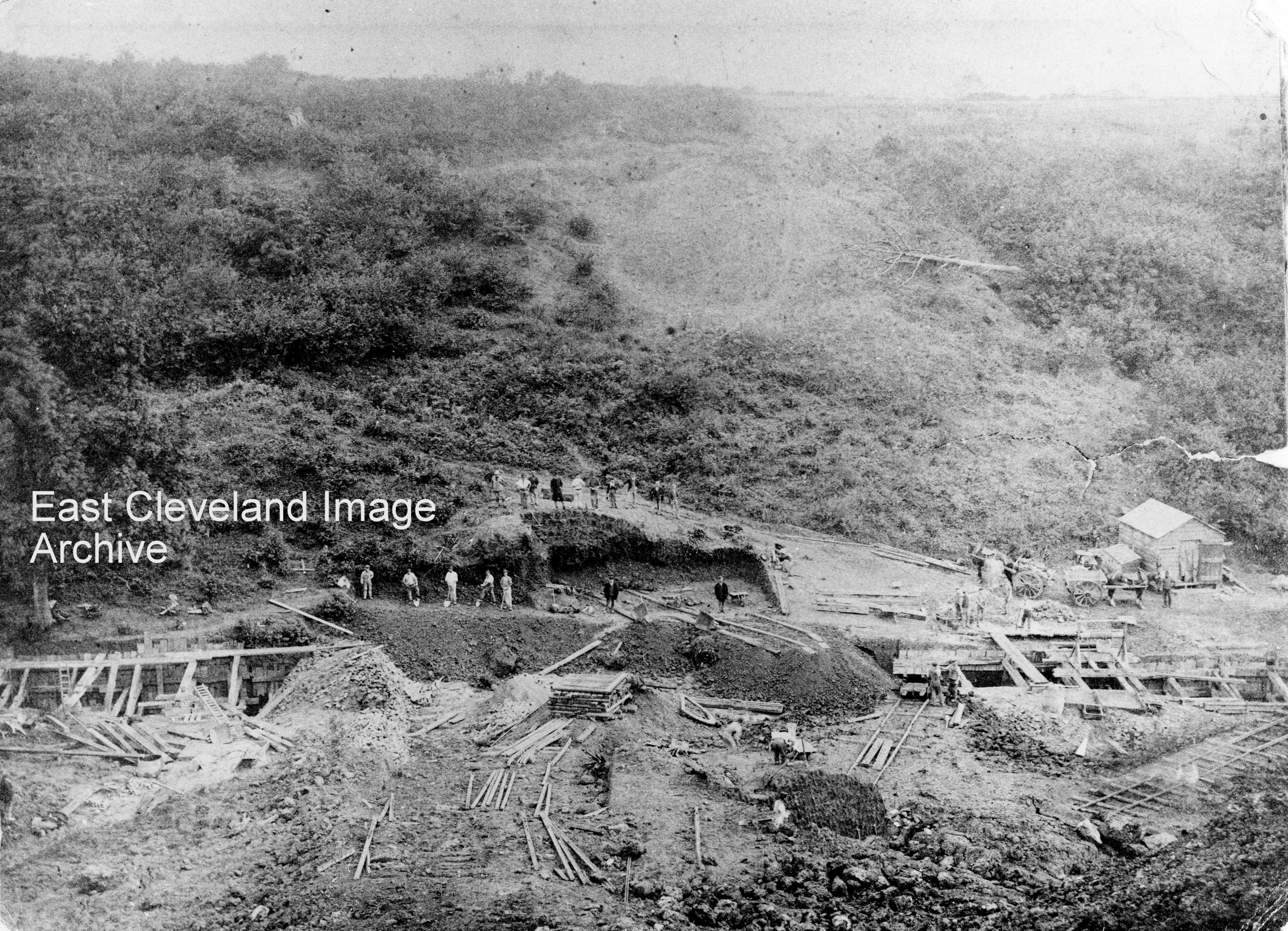
Recent Comments